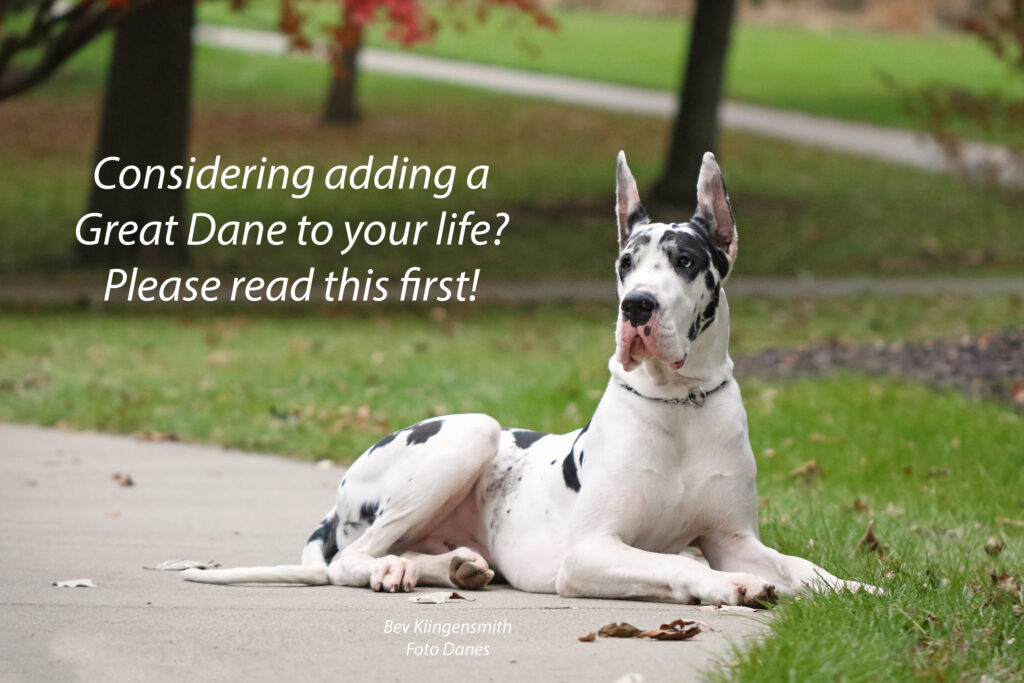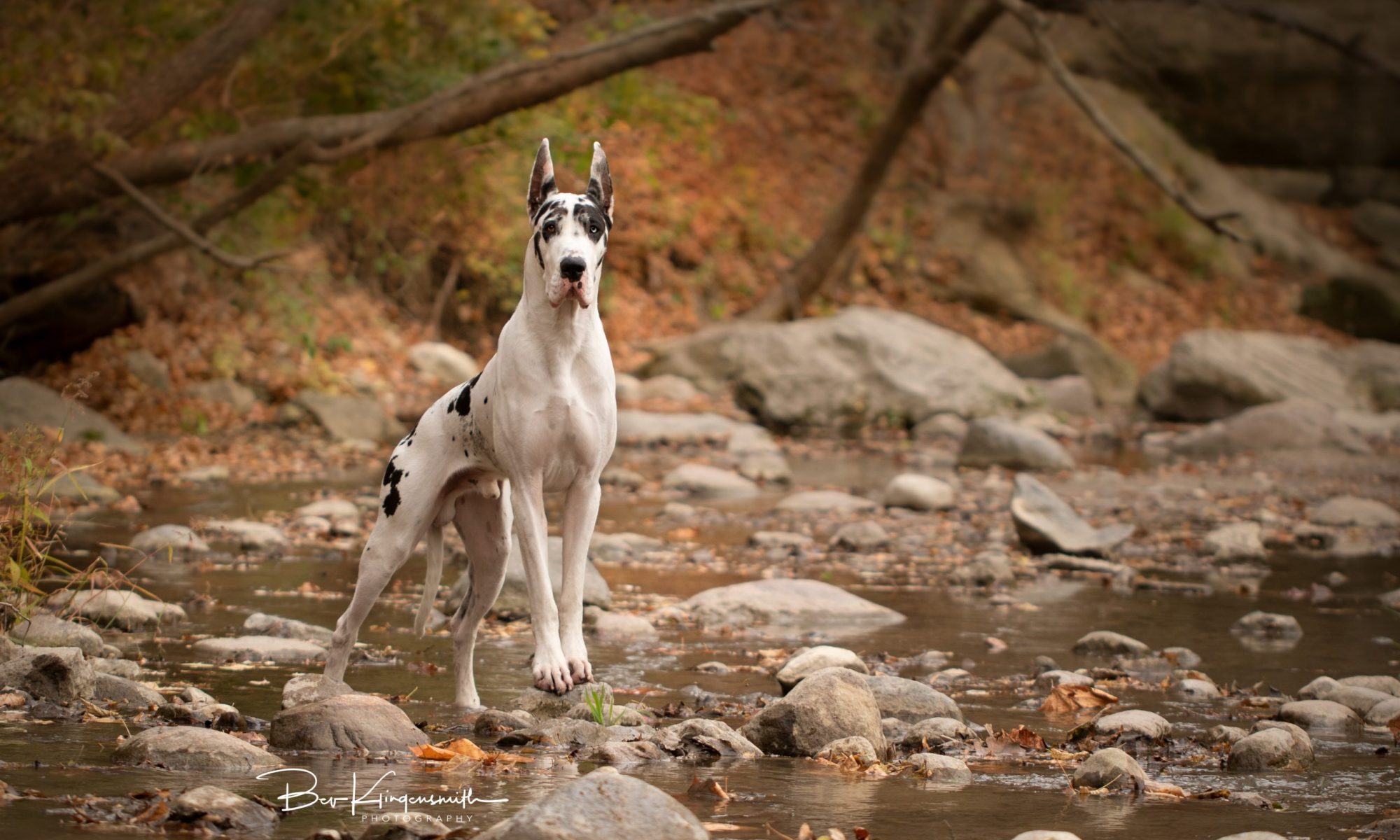
Bing would like to pass along some information about Danes. First, he wants you to know that he is the product of generations of careful breeding. Temperament is both nature and nurture. It is not just in how a dog is raised. Genetics play a huge role, so please only purchase from a responsible breeder or adopt from a responsible rescue group. A giant dog with an unpredictable temperament is dangerous.
Did you know that a dog’s critical socialization period starts at just 3 weeks old? To have the best odds of a well adjusted dog, the breeder should be safely exposing puppies, while still in the whelping box, to various noises, items, surfaces, etc. Then the owner should continue that socialization with things like puppy kindergarten classes. Bing started puppy classes at 8 weeks old and took continual classes for years.
Giant size means most everything costs more (food, toys, crates, beds, vet bills, etc.). Vet bills for a giant breed dog can really add up. Danes shed. A lot. Some drool. Can you physically handle a 100+ lb energetic dog? Danes require lots of early and positive training/socialization to avoid them reacting fearfully in the future.
Most Danes are not couch potatoes! They require ample exercise, especially as young adults. They should not receive “forced” exercise, where they cannot control speed or duration, until they are more mature at 18 months old. They do need free play and space to run, throughout their entire life.
Do you have room in your house for a giant crate? Like any dog, a Dane should be crate trained (for so many reasons, but including their safety and to protect your house) until mature.
Don’t get two puppies at once, especially of the same sex. It’s a recipe for trouble post maturity, when the two dogs often suddenly hate each other.
A responsible breeder is health testing their dogs prior to breeding them. Look for a CHIC number (Canine Health Information Center) on the sire/dam, which means the breeder has completed and publicly shared the appropriate health testing results. To receive a CHIC on a Dane, the dog needs to have the following health tests: hips (OFA or PennHIP), thyroid (OFA), echocardiogram, and eye CERF. Always verify health testing results: www.ofa.org. DNA testing is not the same thing as we do not have genetic markers for these health risks.
A responsible breeder should have mentors and peer support. Do they belong to any clubs (one cannot belong to AKC), like their local all-breed club or Great Dane club? Get recommendations for breeders through local clubs and the parent club of the breed. For Danes in the States, the parent club is the Great Dane Club of America (www.gdca.org). Always do reputation checks from other people “in the know” – call those dog club members and ask them if they would purchase a dog from the breeder you’re considering.
Don’t allow a color preference to drive you to a bad breeder. It isn’t worth the risk of dealing with health and temperament issues.
Did you know that most all breeds have breed specific rescues? Great way to find your next addition! https://gdca.org/the-great-dane/great-dane-rescue/
Check out these articles: How to Select a Breeder and Raising a Puppy to be a Confident Adult
— Bev Klingensmith (proud breeder/owner/trainer of Bing, starring in The Friend) ~ Bing is an AKC champion with performance titles too: CH Flighty Foto White Christmas CD RA CA DCAT TKI CGC TT
#TheFriendMovie
